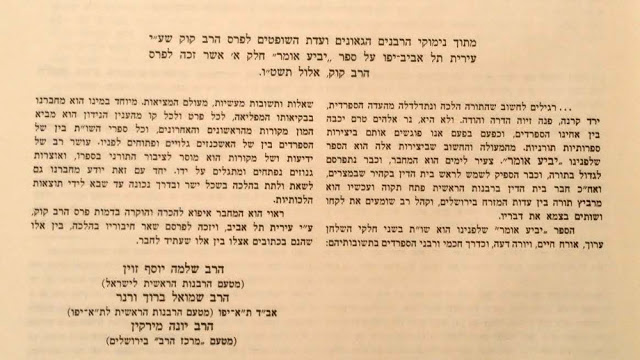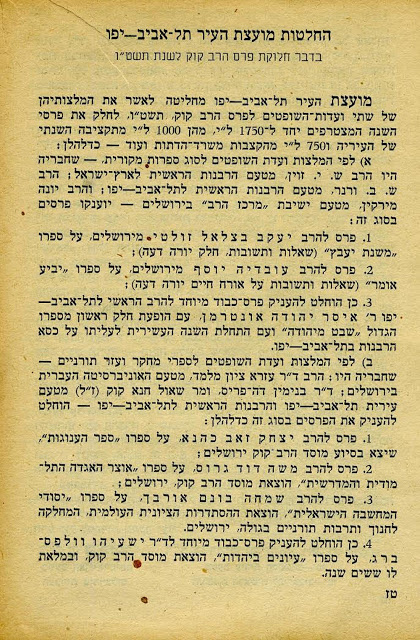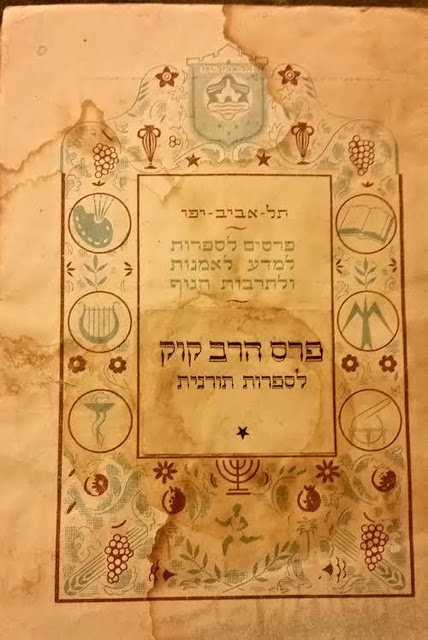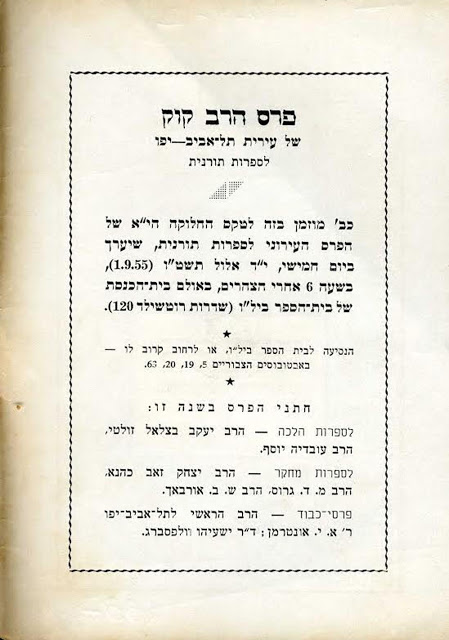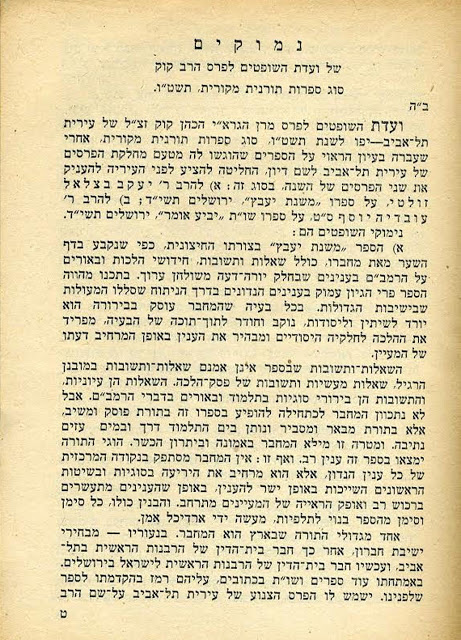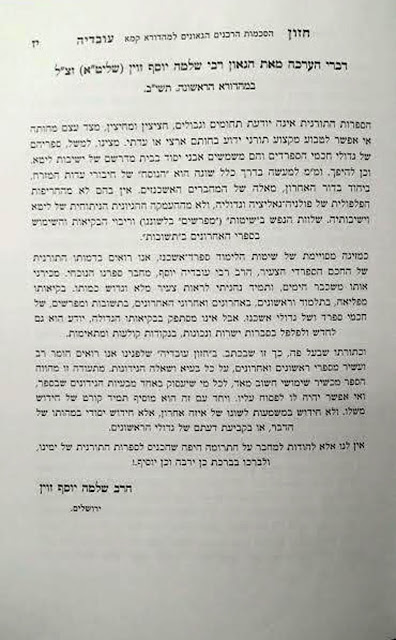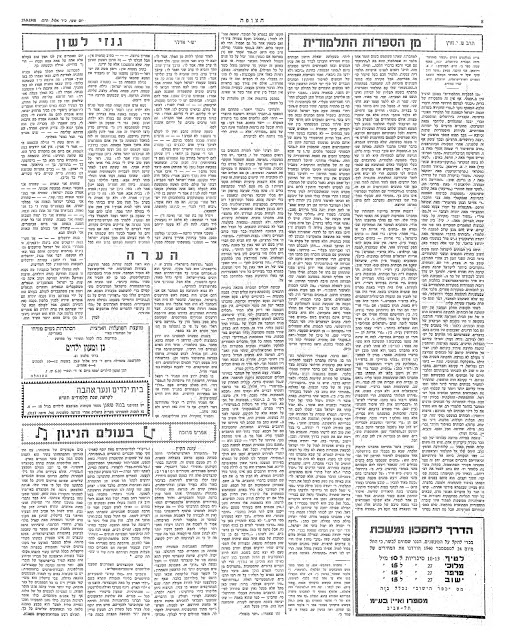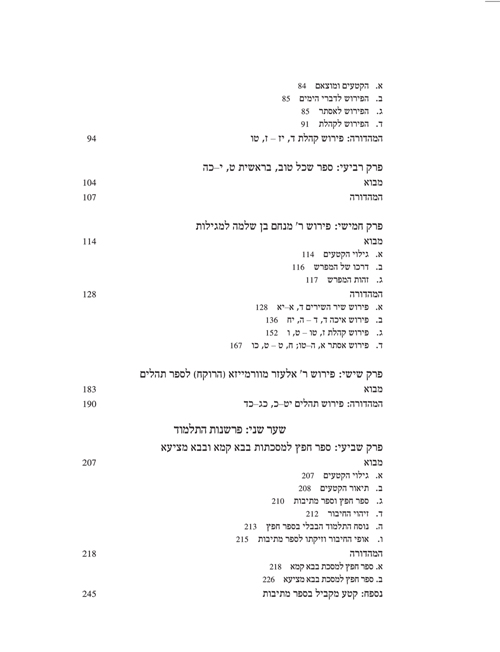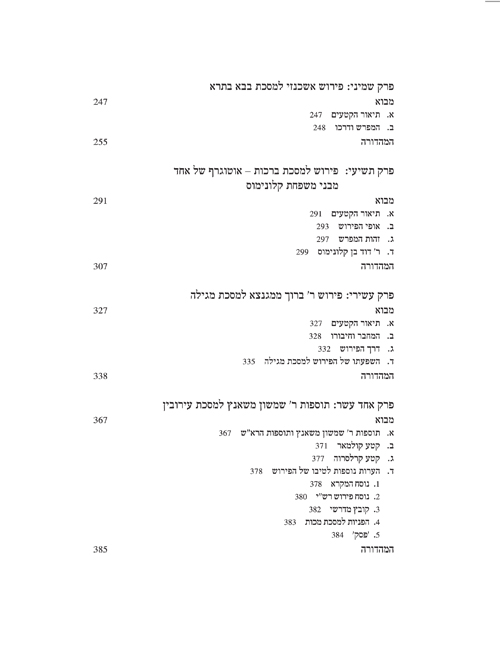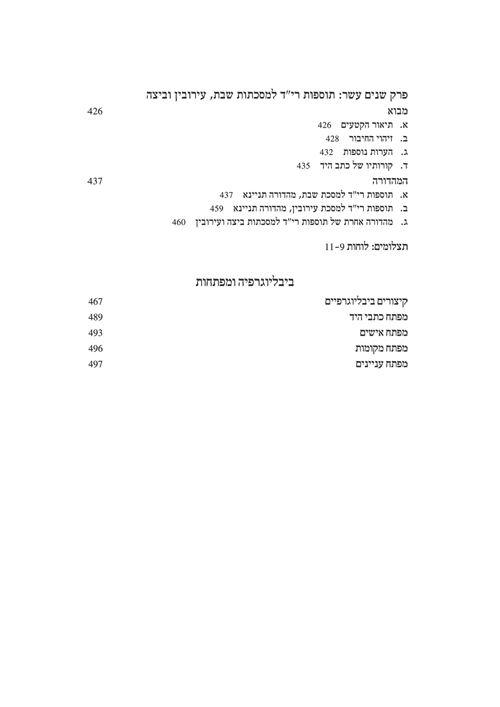The Torah’s Jewish
Sense of an Ending: A Yasher Koyach
to Moses
by James A. Diamond
James A. Diamond,
Joseph & Wolf Lebovic Chair of Jewish Studies, University of Waterloo. He
is currently a Fellow of the Jewish Philosophical Theology Project sponsored by
the Herzl Institute in collaboration with the John Templeton Foundation. His
latest book is Maimonides and the Shaping of the Jewish Canon, published by
Cambridge University Press (http://www.cambridge.org/us/academic/subjects/religion/judaism/maimonides-and-shaping-jewish-canon). This is his first
contribution to the Seforim blog.
Every year, the joy I experience
on Simchat Torah, is somewhat
diminished by the apparent dismal ending of Deuteronomy whose closing we
celebrate on the way back to creation and beginnings once again. Rather than
climaxing in the rebirth of a nation and entry into the territory long ago
divinely promised as a homeland, it ends in death and a frustrated life. Not
only does it conclude on a morbid note, but it does so regarding Moses, the
noblest protagonist of the narrative, the one who least deserves a premature
death. His career begins with his first venture outside the cocoon of a
privileged life within the royal palace walls, triggering an empathic act of
heroic proportions. Without any knowledge of the Israelite God or the
principles and norms that God stands for, Moses reacts violently out of an
inherent sense of justice to prevent human suffering inflicted by those he was
raised to recognize as compatriots. His subsequent intervention in an
aggressive dispute among his own native tribesmen, also to prevent maltreatment
of another human being, meets with a ‘mind your own business’ attitude, along
with an ominous prospect of betrayal. Rejected by the Hebrew community to which
he belonged by birth, and by his adoptive Egyptian community in which he was
nurtured, for his opposition to injustice no matter its source or target, he
became alienated from both. There remained no choice but to live out his life
in exile- a stranger in a foreign land.[1]
A divine commission, plunging him
back into that very orbit of rejection to complete what he had started,
shattered what little peace he found in an estranged existence. He in fact
proved himself to be precisely the most qualified to lead by marshaling
repeated arguments against his qualifications for the mission of national
liberator, ranging from insignificance (Who
am I?)[2] to lack of confidence (They
will not believe me)[3] to inarticulateness (I am not a man of words).[4] The politician who doesn’t seek out
position, and who is compelled by others to run for public office on the
strength of his principled reputation, is the one least likely to fall prey to
the seductions of power that accompany that office. In fact the rare objective
description of Moses’ character in the Bible, a humble man, more so than any man on earth,[5] reflects a sense of self-effacement that rules out self-interest
as a decisive factor in his public life. Hesitatingly, he accepts and liberates
the Israelites only to encounter years of incessant complaint, ingratitude, and
rebellion. Ceaseless aggravation and insult escalated to the outrageous extent
of the peoples’ longing to return
to the “comforts” of that very hellish existence Moses had fought so courageously
to release them from.
This is the man that God summons
to the top of a mountain where he can almost touch everything he had dreamed
of, fought for, and ardently dedicated himself to, and on whom God then
abruptly drops the curtain- and there you
shall not cross.[6] It is difficult to see this as something other than
unbecoming of God, profoundly deepening the pain of a leader who is on the
precipice of his life’s goal. Why would God prevent Moses from taking that tiny
step necessary to consummate his mission? Why would God withhold a future from
the man who was not only instrumental in attaining it, but was the man who
originally surrendered his own entire regal future in the name of justice? At
the end of the annual cycle of Torah readings, are we to celebrate a malevolent
God who punishes his most devoted “friend” by denying him the joy of completing
a quest He Himself imposed upon him? And shouldn’t the punishment fit the
gravity of the crime? Slighting God’s honor (You did not affirm my sanctity in the eyes of the people),[7]
surely does not warrant sanctioning it as a capital offence by denying Moses
the fruits of his relentless sacrifices when they are within reach. And
finally, doesn’t this reading land precisely in the season for forgiveness, a
time for the supreme Being to have set a supreme example of mercy,
graciousness, and magnanimity, when the simple cost would have been to yield
His own glory? God seems to have missed the lesson of Moses’ humility.
As always though, in the long
history of Jews reading their sacred texts, those texts’ problems goad the
reader into rethinking what may at first seem obvious or apparent. As the
eminent biblical scholar James Kugel points out, the Bible’s irregularities, in
this case morally and theologically troubling aspects, are the grains of sand
that irritate the oyster-like Jewish interpretive tradition to construct pearls
around them.[8] Perhaps the way to approach this final episode is to reconsider
God’s “punishment” as really a favor and concession to Moses’ character and
sensibility. On closer examination it may in fact be graciously consistent with
Moses’ biography, and superbly commemorates who he authenticated himself to be.
The key to these final verses is
their casting of Moses’ relationship to God in terms of equals who meet each
other face to face. Earlier in the
Torah that same phrase, face to face, captures the familiarity of a
normal human conversation, as one man
speaks to another.[9] Genuine dialogue can only take place when both participants
express their own views, assert their own personalities, and are open to
debate. Any conversation wholly dominated and monopolized by one participant
amounts to a monologue that promotes only listening but not responding or true
engagement. Understood in this way we become mindful of Moses’ inaugural
meeting with God who, for the first time in biblical history, formally
introduces Himself by name. However, the puzzling name, I will be whoever I will be (ehyeh asher ehyeh),[10] is
a tautological non-name. Rather than a being that is fixed by definition,
confined to a particular place, and possessing jurisdiction over an exclusive
domain, God tells Moses that He cannot be pigeon holed into a pre-conceived
framework that a specific name might enable. God is a being in flux,
encountered differently by different human beings in different circumstances.
He is an evolving God, rather than a God that simply and immutably is, there to
be called on ritually by those privy to His name. As such, this open-ended non-name conveys a relational being, a God of
perpetual becoming, that cannot but be elusive. God is continually shaped and
reshaped by the respective partners with whom She establishes relationship.
Moses’ life is paradigmatic of this Jewish spiritual model.
Returning to Moses’ origins,
God’s awareness of Israel’s suffering in Egypt immediately follows a quick
succession of Moses’ actions, all sharing the common feature of interventions
curtailing injustice and oppression. Considering the literary progression of
events it is quite plausible to conclude that Moses’ autonomously motivated
acts instigated by his own “seeing,” or evaluation of circumstances, provokes
God’s immediately reported own “seeing” and “knowing” of Israel’s suffering- And God saw the Israelites and God knew.[11]
The Jewish Publication Society’s translation exquisitely captures this
nuance with its rendering of “knew” as “and God took notice of them.” In other
words, God, who was oblivious to human suffering until then, was inspired to
emulate Moses’ moral activism with His own moral awakening- an act of maturity
with which the declaration “I will be” resounds. Rashi’s comment on “God’s
knowing” expressively understands this divine realization as an emergence from
apathy, transitioning from “ignoring the plight of His creation” to “focusing
His attention on them.” God’s new consciousness, compelling His own
intervention is evoked by Moses’ example. It is a premiere instance of God
imitating man, the inverse of the primary religious mandate of imitatio dei, or emulating God.
Both in the Bible itself and
later rabbinic traditions Moses continues in this vein of affecting and shaping
God’s will and actions. When God categorically declares His intentions to wipe
out the Israelites in response to their worship of the golden calf, Moses
refuses to accept it as an irrevocable fait accompli and argues God out of it.
It is as if God announces His genocidal intent in order to provoke a visceral
moral response to it – “Nu, Moses, what do you have to say?” What God doesn’t
want, it seems, is the silent submission to His will so often associated with
religious orthodoxy. The Rabbis positively accentuate the boldness of what
normally would be taken as insolence by picturing Moses grabbing God and
threatening not to release Him until He submits to the demand of a pardon.[12]
Moses proves his spirituality precisely by refusing to blindly succumb to
divine fiat, and instead, transforming God Herself with his extraordinary
devotion to humanity. An opinion in the Talmud even portrays God as lamenting
the death of Moses for the loss of the one who mediated between Him and His
children.[13]
Indeed, the Rabbis push this idea
radically further. The ancient rabbis noted Deuteronomy’s inconsistencies long
before modern biblical criticism “discovered” them. However they offered a far
more radical and ethically provocative solution than the determination of
different author’s hand at play in the composition of the text. Some laws in
Deuteronomy, which contradict previous versions of them in the Torah, are
attributed to Moses’ own creative revisions, which God subsequently endorses.
For example, Moses replaces God’s explicit endorsement of vicarious punishment
in Exodus, visiting the iniquity of
fathers on children, with a just antithetical version in Deuteronomy- every person shall be put to death for his
own crime.[14] Moses doesn’t simply amend and repeal divine
legislation and theology to keep it current. He humanizes God.
Against this background the
Torah’s ending is recast from a cruel insensitive scene into one that
poignantly depicts a final reunion of two dedicated friends who have mutually
enriched each other’s existences. Should Moses have extended his leadership
tenure and guided the people into the land he would have been faced with simply
more of the same anguish and suffering he had experienced up until this point.
It would surely have entailed the wrangling, the complaints, the jealousy, and
the power struggles that accompany the burdens of state building. God privileges
the visionary Moses with an ocular vision- and
God showed him the whole land[15] – that guarantees the posthumous success
of his efforts. God does not invite Moses up the mountain to deny him entry
into the Promised Land (I have let you
see it with your own eyes But you
shall not cross there[16]), but rather to preempt the pain of doing so,
while assuring him that his vision will inevitably become a reality. The verse
reads better as “I have let you see it with your own eyes and there you need not cross.” Moses is thus spared
being mired in the partisan machinations that, as the historical record of the
books of Joshua to the end of Kings evidence (let alone the contemporary
history of the modern Jewish state!) would certainly have ensued. His record
then of autonomy and initiative, even in the face of divine obstinacy, is
preserved and remains untarnished by the political intrigue that would have
inevitably consumed him to the very end.
The final three verses spell out
the absolute uniqueness of Moses’ three pronged legacy- an unparalleled face to face intimacy of with God; the
efficacy of the miracles that the Lord
sent him to display in Egypt against Pharaoh; and all the great might and awesome power that Moses displayed before
Israel.[17] Moses’ singularity is first evident in his private
life communing with God, and then in two dimensions of his public life,
combatting enemies and sustaining friends. Yet, note the subtle distinction
made between Moses as God’s emissary vis-à-vis the Egyptians in the second last
verse, and Moses in his own capacity vis-à-vis Israel in the last. It may have
taken miracles to convince the taskmasters of the Israelite God’s invincibility
to release their repressive stranglehold on their slaves. However, the
establishment of a cohesive nation and its continuing viability cannot rest on
miracles and otherworldliness. That requires human autonomy and human
sensitivity to the social, political, and moral dimensions of a human polis,
which Moses qua Moses independently
sets in motion for his successors to follow.
Rashi’s Torah commentary
analogously ends with a striking midrashic explication of this final verse that
accentuates its extraordinary emphasis on the human dimension. Rashi oddly
identifies that awesome power wielded
by Moses in front of the entire nation of Israel with his breaking of the
Tablets at Sinai. As Rashi states, Moses “decided on his own to break the
tablets publically and God’s will acquiesced to his will, offering him
congratulations (yishar kochacha) on
breaking them.”[18] Rabbinically the Torah’s ending picks up on its patent
sense of concentrating on human capability, but empowering it to the utmost
extent of overcoming God, of persuading God to defer to the human perspective.
In fact this midrash is the very source for the idiomatic salutation of yasher koyach (may your strength be
firm) in response to any job well done, particularly those that benefit
community. Every single positive human accomplishment and societal contribution
then resonates with its origins in Moses’ exertion of the very outer limits of
human capacity.
This is why it is so important
for the Torah, despite its minimalist narrative style, to emphasize the
seemingly superfluous detail of the hiddenness of Moses’ grave- no one knows his burial site to this day.[19]
Given the phenomenon prevalent in our own time of worshipping dead
saints, it is not difficult to imagine the idolization Moses’ gravesite would
have certainly attracted. Shockingly perhaps to many, yet soberly, Moses
Maimonides discourages frequenting cemeteries and halachically rules in his
legal code against the erection of monuments on the graves of the righteous (tzadikim), “for their words are their
memorials.”[20] As Moses’ life and death illustrate, Judaism must
never lapse into a cult of the dead but must be a celebration of life. Moses’
grave is concealed precisely so that the focus will always be directed toward a
life lived and profound teachings transmitted.
There is a well known debate in
the Talmud concerning the authorship of the last eight verses in the Torah that
record Moses’ death, with one opinion attributing them to Joshua’s hand.
However, even those that consider Moses to have penned the report of his own
death admit that there is a change in its manner of transcription, imagining
Moses writing in an inconsolable silence, “with tears.” Even more moving is the
alternative interpretation of this phrase where the words on the parchment were
literally inscribed with tears rather than ink. An intriguing halakhic consequence
regarding the rules governing the formal reading of these final verses in the
synagogue informs this heartrending debate. Its ambiguous Talmudic formulation
that a single
individual reads them
attracts a number of interpretations, but the dominant one is that they must be
read as one unit by one person without any interruption (Rashi).[21] Maimonides
however interprets it stunningly and uniquely as dispensing with the standard
requirement of a prayer quorum of ten males (minyan) for their recitation! His rationale is “since the sense of
these verses refers to what occurred after the death of Moses they have become
distinct.”[22] Maimonides’ ruling strikingly affords a normative
framework for my philosophically theological reading the Torah’s final scene.
His halakha captures the shift in narrative focus and mood of the transition
from ink to tears, from the people at the foot of the mountain to Moses alone
at its summit, from community to the solitary individual. It promotes a
dramatic reenactment of everything I have argued about Moses’ characterization
in these final verses- a demarcation of a private space for the individual, for
the emergence of one’s uniqueness, for a semblance of the relational spiritual
intimacy of the face to face, and for
the creative power of the single person who stands out from the crowd. By
granting halakhic legitimacy to this Torah reading outside the formal framework
of a minyan, Maimonides transforms every Simchat Torah into the possibility of
momentarily experiencing, however partially, the awesome power of Judaism’s incomparable lonely man of faith.
And so the Torah ultimately
climaxes, neither with an impressive tombstone, nor with preternatural
transcendence that is the subject of its penultimate verse, but with the spiritual
strength and moral defiance of a single human being. It carves out a space for
human beings in what can all too often slip into a dangerously God intoxicated
universe that overwhelms human autonomy rather than inspire it. It concludes
with humanness rather than godliness. That is Moses’ life and that is his
epitaph- a joyful and Jewish sense of an ending.
_____________________________________________________
[1]
Exodus 2:22.
[2]
Ibid, 3:11.
[3]
Ibid, 4:1.
[4]
Ibid, 4:10.
[5]
Num. 12:3.
[6]
Deut. 34:4.
[7]
Num. 20:12.
[8]
See his seminal study in James Kugel, “Two Introductions to Midrash,” Prooftexts 3:2 (May 1983): 131-155,
reprinted in Geoffrey Hartman and Sanford Budick, eds., Midrash and Literature (New Haven: Yale University Press, 1986),
95-97.
[9]
Exod 33:11.
[10]
Exod 3:14.
[11]
Ibid, 2:25.
[12]
bBerakhot 32a.
[13]
bSotah 13b. Here I follow Rashi’s
explanation. Maharsha, in his Hidushe
Aggadot, actually identifies this talent directly with assuaging God’s
anger against Israel because of the golden calf incident.
[14]
On this see Tanhuma, Shofetim 19.
There are many other sources where not only Moses, but patriarchs, other
prophets, and even rabbinic sages convince God of the correctness of their
opinions and actions. To mention just a select few see for example Shemot Rabbah 15:20, Bereshit Rabbah, 44:21; and Midrash Tehillim 4 that commences with
the idea that this ability singles out the greatness of the Jewish nation.
[15]
Deut. 34:1.
[16]
Ibid, 34:4.
[17]
Ibid, 34:10-12.
[18]
See Sifrei 357 and bShabbat 87b.
[19]
Deut. 34:6.
[20]
Mishneh Torah, Avel, 4:4.
[21]
bMenachot 30a; bBava Batra 15a.
[22]
Mishneh Torah, Tefillah, 13:6. Rabad,
caustically attacks this ruling as “bizarre,” sarcastically questioning
“Where did the quorum go?”

